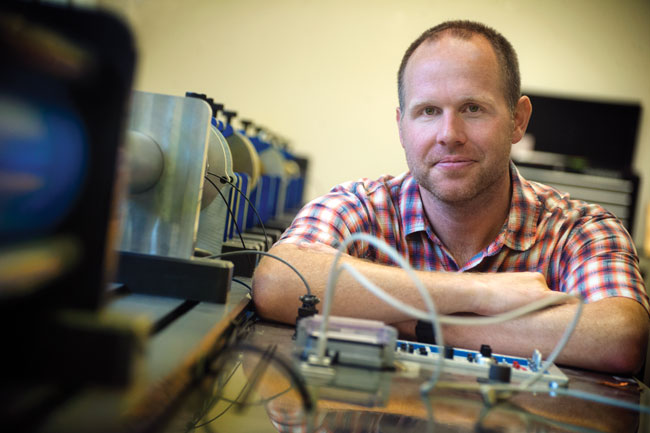shook up
Rock Solid
Grant enables professor to study earthquakes, educate secondary school teachers

W. Ashley Griffith
The August 2014 earthquake in Napa Valley caused an estimated $300 million in damages to homes and businesses. Minimizing such destruction is one goal of geophysicist W. Ashley Griffith’s latest research.
The earth and environmental sciences assistant professor received about $400,000 from the National Science Foundation Faculty Early Career Development (CAREER) Program to study how rock structures react to events such as earthquakes, meteor impacts, and explosions.
“Our goal is to look at how a rock behaves in response to fast-loading rates and relate that behavior to its mineral composition and microscopic structure,” Dr. Griffith says. “We believe the characteristics are linked. If that proves true, this work could lead to a better understanding of the physics of past earthquake and impact events, increasing our predictability of hazards associated with future such events. It could also allow engineers to design more effective structures.”
Griffith is also using the grant to partner with Teach for America-Dallas/Fort Worth to create Teach for America Rockcorps. (Griffith is a former Teach for America member.) The Rockcorps program will involve secondary school teachers in research and provide them with a geophysics-based curriculum for their classrooms.
“Dr. Griffith’s research in geophysics is helping add a new dimension to what is known about the Earth’s movements,” says James Grover, interim dean of the College of Science.

















